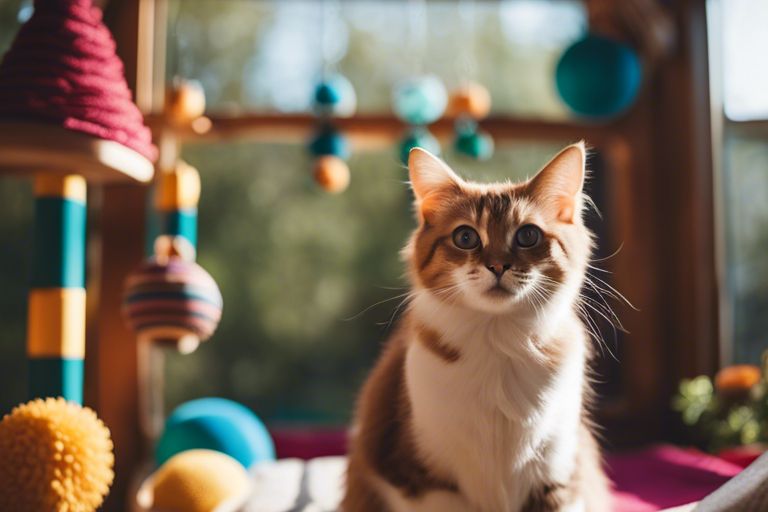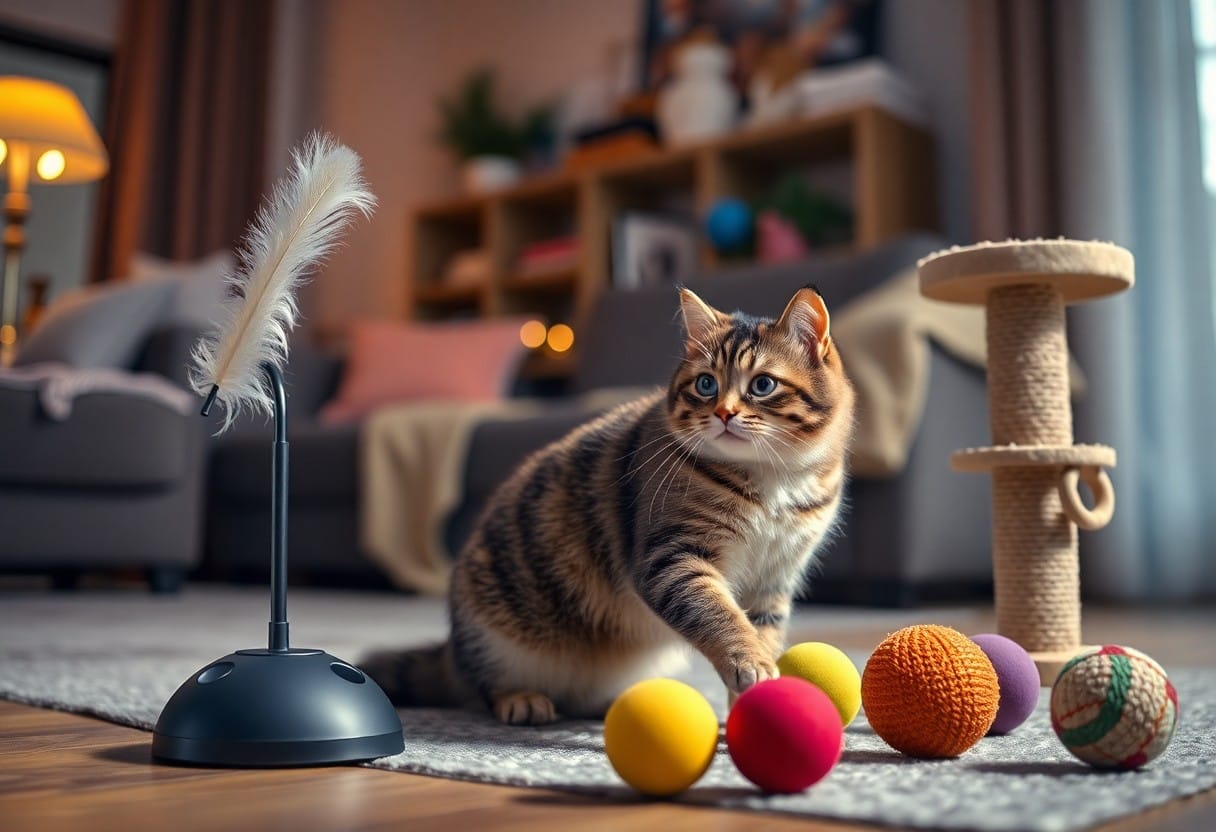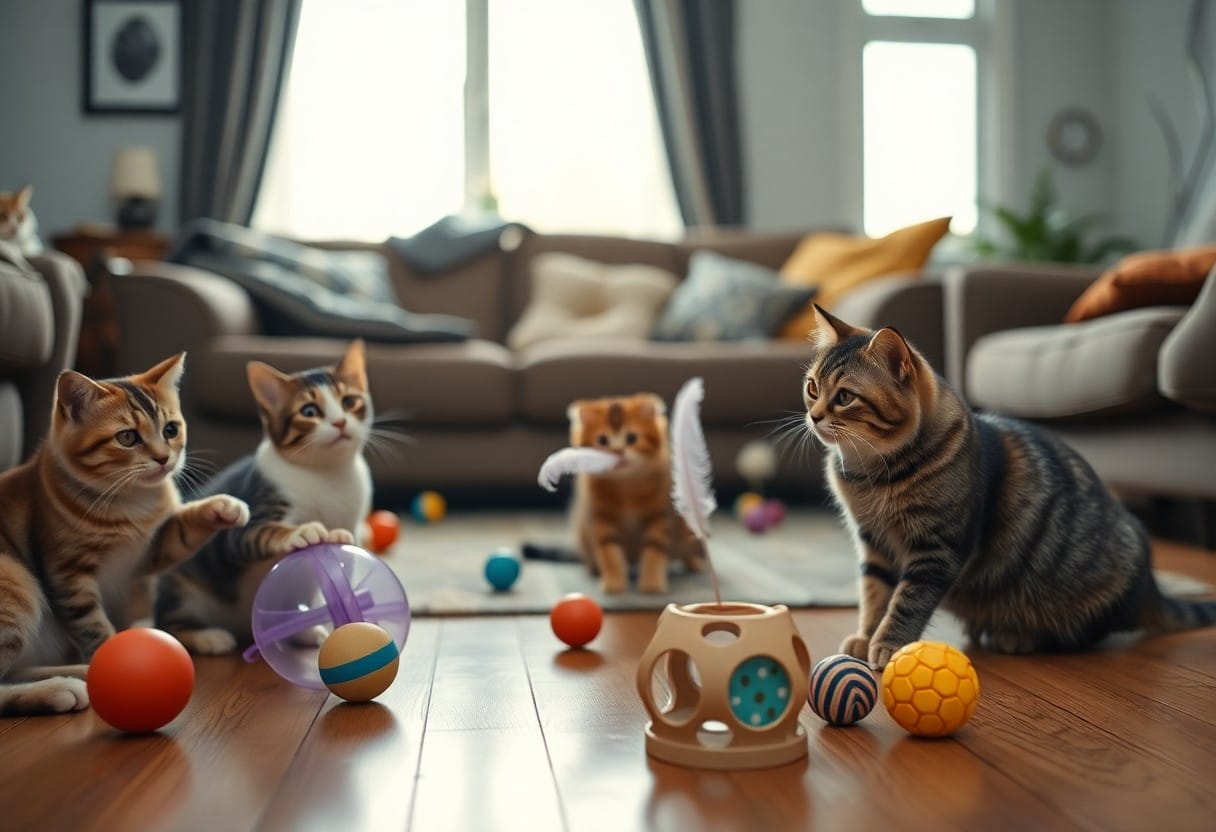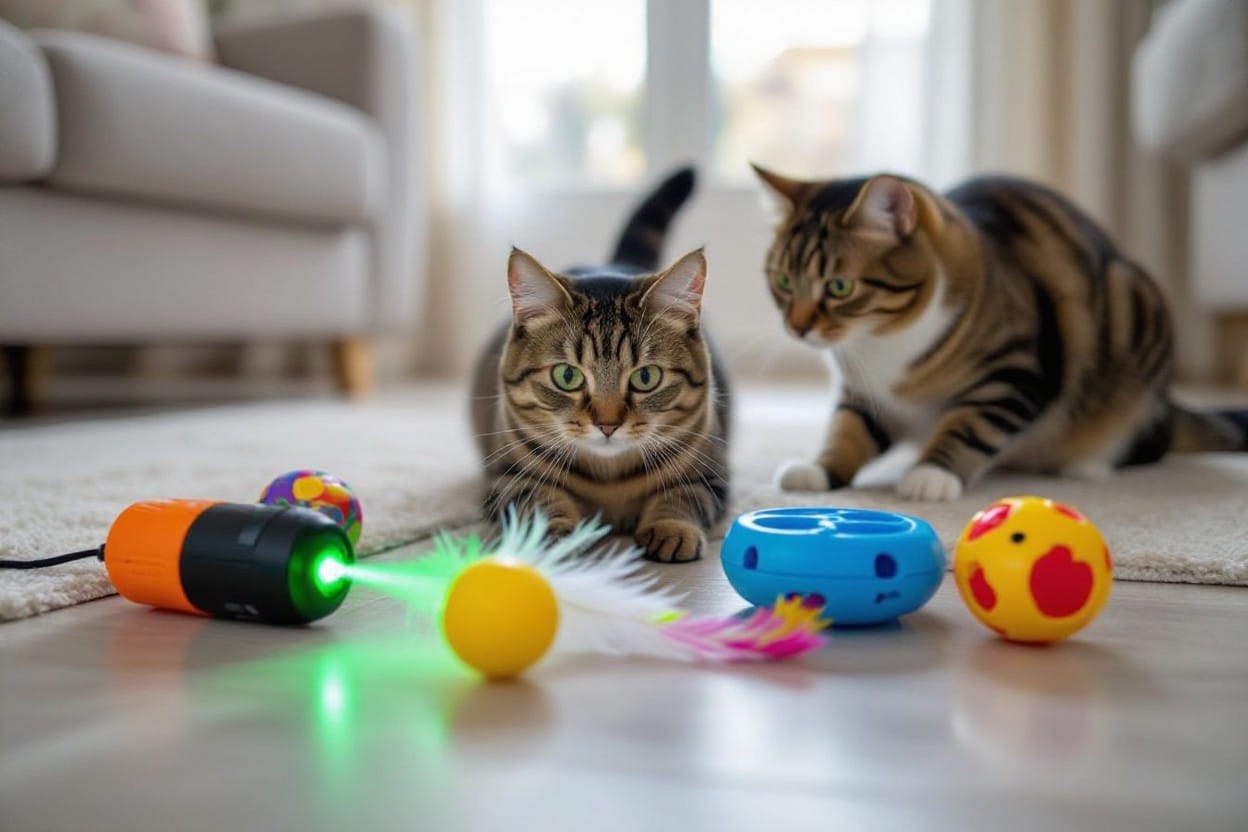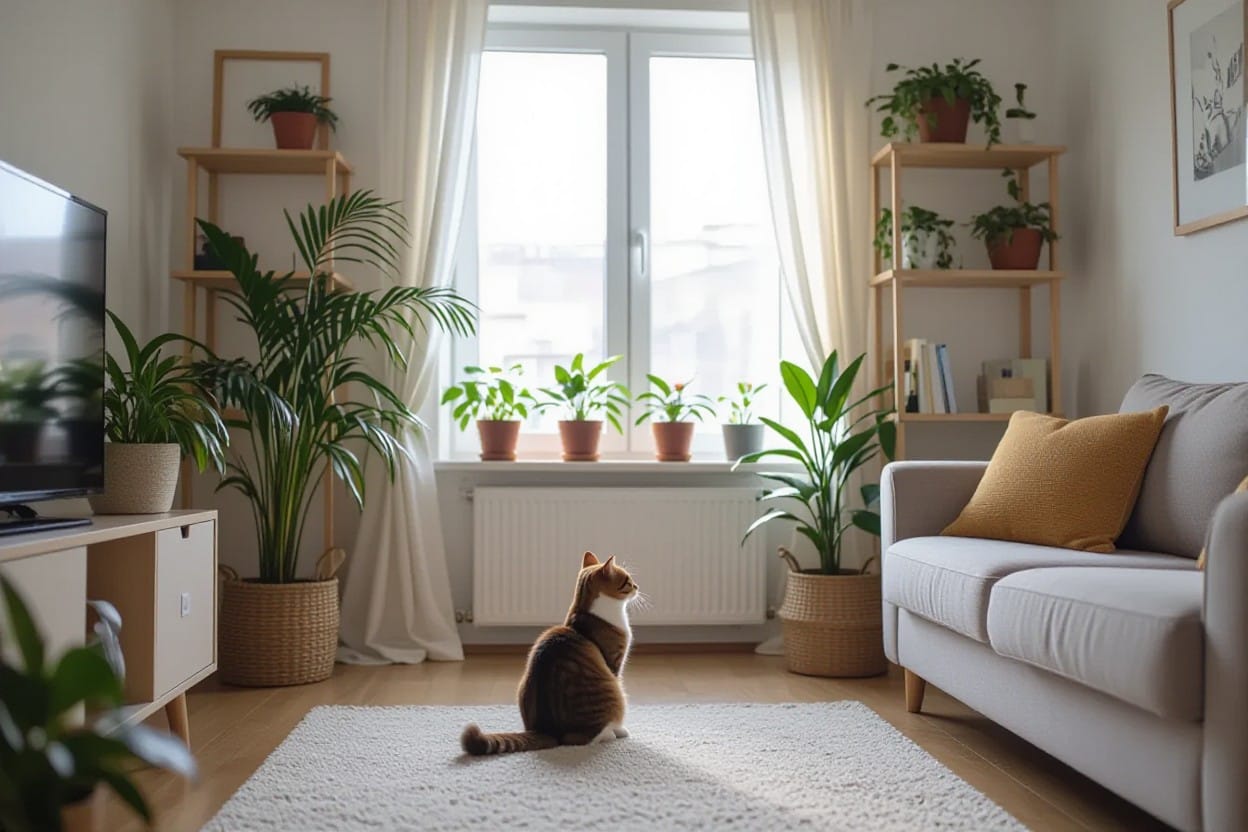It’s crucial to ensure that your indoor cat has a safe and stimulating environment to thrive in. Indoor cats rely on their surroundings for mental and physical enrichment, so it’s important to create an environment that caters to their natural instincts and behaviors. By implementing a few key strategies, you can provide your indoor cat with a fulfilling and engaging environment that promotes their well-being.
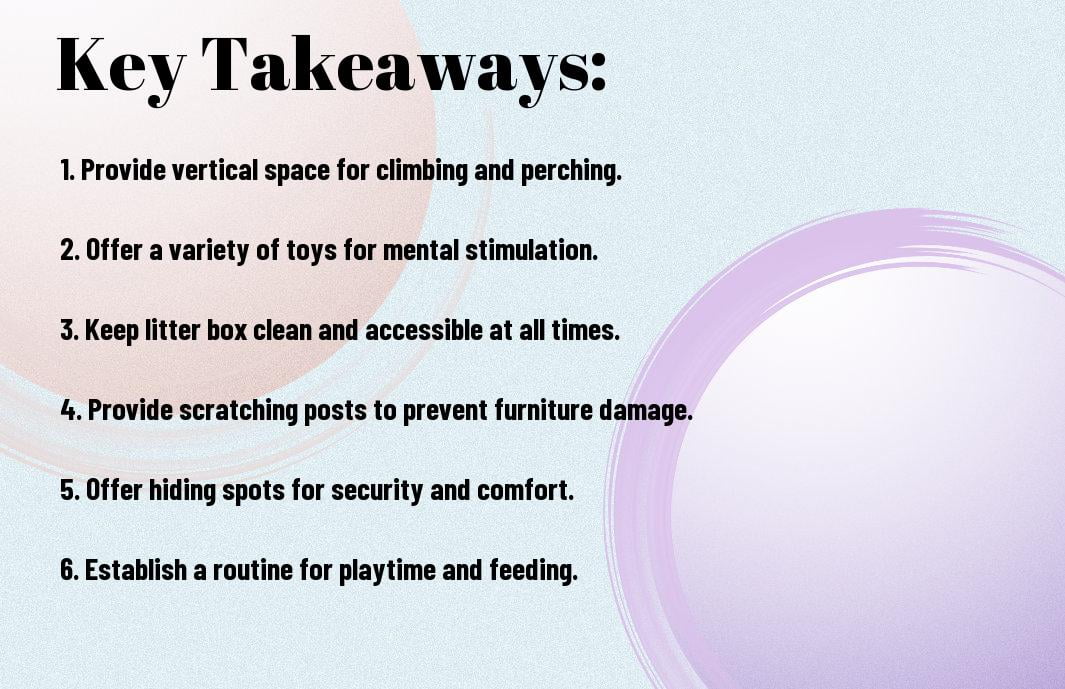
The Basics of Feline Safety
There’s nothing more important than ensuring your indoor cat’s safety. To create a safe environment for your feline friend, you must first identify any potential hazards in your home.
Identifying Potential Hazards in the Home
Safety begins with recognizing the dangers that exist within your living space. Common hazards include toxic plants, small objects that can be swallowed, electrical cords that can be chewed on, and open windows or balconies that could pose a falling risk. By being vigilant and proactive in identifying these hazards, you can take the necessary steps to eliminate or minimize them, thus safeguarding your cat from harm.
Cat-Proofing Your Space
An important aspect of feline safety is cat-proofing your living area. This involves creating a space that is not only free of hazards but also stimulating and enriching for your indoor cat. Provide plenty of vertical space for climbing, scratching posts for scratching, and interactive toys for mental stimulation. Additionally, ensure your cat has access to cozy hiding spots and comfortable resting areas. By cat-proofing your space in this way, you not only enhance your cat’s safety but also promote their overall well-being and happiness.
With these measures in place, you can rest assured that you have created a safe and stimulating environment for your indoor cat, allowing them to thrive and enjoy a fulfilling life indoors.
Space Optimization for Feline Activity
Vertical Space Utilization
One of the key elements in creating a stimulating indoor environment for your cat is optimizing vertical space. Cats are natural climbers and providing opportunities for them to climb can enhance their physical and mental well-being. Consider adding cat trees, shelves, or window perches to allow your feline friend to explore and survey their surroundings from various heights.
Setting Up Safe Climbing and Perching Areas
Space should be allocated for safe climbing and perching areas to ensure your cat can navigate their environment without hazards. Make sure shelves or perches are securely installed to support your cat’s weight and provide stable platforms for resting or playing. Consider placing these areas near windows to give your cat access to natural light and a view of the outside world.
This vertical space optimization not only caters to your cat’s natural instincts but also promotes exercise and mental stimulation, reducing the likelihood of behavioral issues such as boredom or obesity. By strategically placing climbing and perching areas, you can create a dynamic environment that keeps your indoor cat engaged and content.
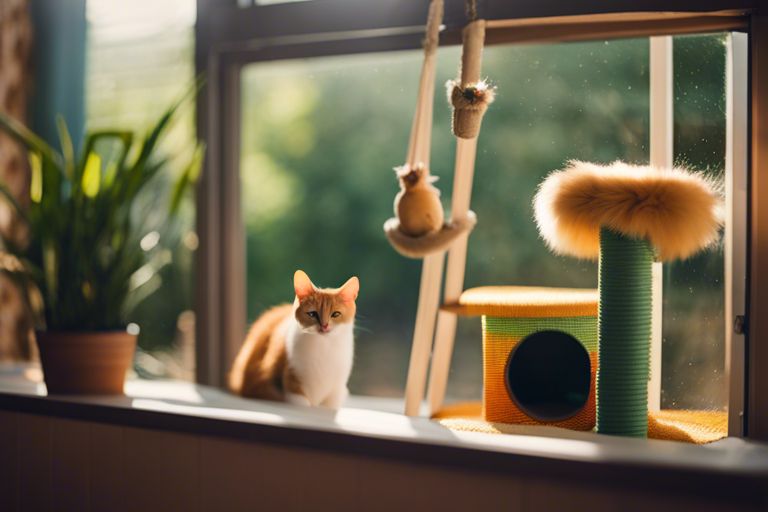
Enrichment Through Toys and Play
Variety of Toys for Mental Stimulation
To ensure your indoor cat stays mentally stimulated, it’s important to provide a variety of toys that cater to different senses and behaviors. Toys that mimic hunting behaviors, such as interactive toys with moving parts or feather wands, can engage your cat’s natural instincts and keep them entertained for hours. Puzzle toys that dispense treats can also provide mental stimulation and a rewarding challenge for your feline friend.
Interactive Play Techniques
One of the best ways to bond with your indoor cat and provide physical and mental stimulation is through interactive play. Use toys like laser pointers or fishing rod toys to engage your cat in chasing and pouncing games. Rotate the toys regularly to keep things fresh and exciting. Remember to always supervise playtime to ensure safety and prevent your cat from ingesting small toy parts.
Variety in play techniques is necessary to prevent boredom and ensure your cat’s overall well-being. Apart from toys, consider incorporating activities like hide-and-seek or creating DIY puzzle games using cardboard boxes or paper tubes. These interactive play techniques can help keep your indoor cat active, happy, and mentally sharp.
The Role of Scratching Posts and Pads
Importance for Claw Health and Stress Relief
For indoor cats, scratching posts and pads play a crucial role in maintaining their claw health and providing stress relief. Scratching is a natural behavior for cats that helps them shed the outer sheath of their claws, keeping them healthy and sharp. In addition, scratching also helps cats stretch their muscles and relieve stress and tension. By providing appropriate scratching surfaces, you can help prevent your cat from turning to furniture or carpets to fulfill their scratching instincts.
Types and Placement of Scratching Posts and Pads
When opting for scratching posts and pads for your indoor cat, it’s important to consider the material and size that your cat prefers. Some cats may prefer sisal, while others may prefer carpet or cardboard. It’s also crucial to choose a scratching post or pad that is tall enough for your cat to fully stretch out while scratching. Additionally, placing scratching posts and pads in multiple locations throughout your home can encourage your cat to use them regularly.
| Material | Sisal, Carpet, Cardboard |
| Size | Tall enough for full stretch |
| Number of Posts | Multiple locations |
| Placement | Strategic areas in the home |
| Maintenance | Regular trimming of worn areas |
Any cat owner knows that different cats have different scratching preferences, so it may be necessary to try out a few different types of scratching posts and pads to find the one that your cat loves. Some cats may enjoy horizontal scratching pads, while others may prefer vertical posts. It’s crucial to observe your cat’s behavior and adjust accordingly.
- This will help prevent your cat from getting bored with their scratching surfaces and seeking out other furniture to scratch.
Plus, ensuring that your cat’s scratching posts and pads are well-maintained is key to their continued use. If a post becomes worn or tattered, consider replacing it or trimming any frayed edges to entice your cat to continue using it.
| Material | Sisal, Carpet, Cardboard |
| Size | Tall enough for full stretch |
| Number of Posts | Multiple locations |
| Placement | Strategic areas in the home |
| Maintenance | Regular trimming of worn areas |
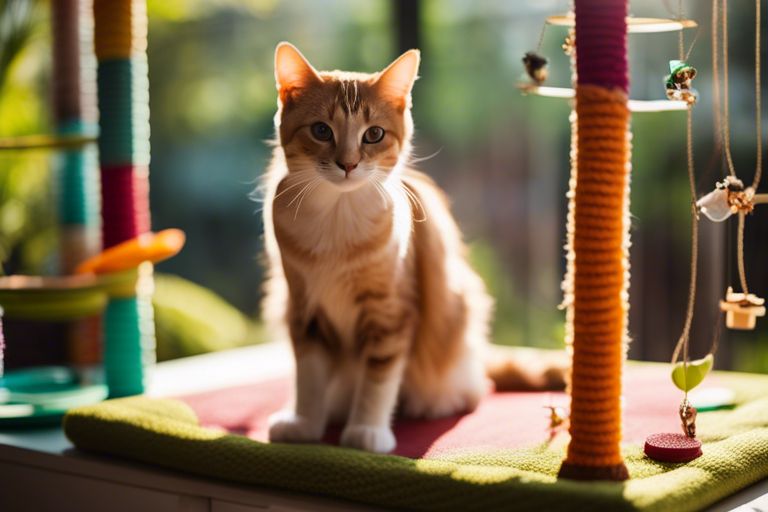
Integrating Technology for Enrichment
Automated Toys and Games
An indoor cat can greatly benefit from the use of automated toys and games to keep them active and engaged. These gadgets can mimic hunting behaviors, provide mental stimulation, and help prevent boredom. Interactive toys such as laser pointers, robotic mice, and treat-dispensing devices can keep your cat entertained even when you’re not at home.
Monitoring and Interaction Gadgets
Automated monitoring and interaction gadgets can help you keep an eye on your indoor cat’s activity levels and well-being. These devices can include cameras that allow you to check in on your cat while you’re away, automated feeders to ensure timely meals, and interactive devices that enable remote play sessions. By incorporating these gadgets into your cat’s environment, you can enhance their quality of life and provide mental stimulation throughout the day.
A cat camera that offers two-way audio can also allow you to interact with your cat remotely, providing comfort and reassurance when you’re not at home. This kind of technology can help strengthen the bond between you and your indoor cat, even when you’re physically apart.
The Importance of Routine and Training
Establishing a Predictable Schedule
Despite their independent nature, cats thrive on routine and structure. By establishing a predictable schedule for your indoor cat, you can create a sense of security and stability for them. Consistency in feeding times, play sessions, and grooming routines can help reduce stress and anxiety in your feline companion.
Training for Enrichment and Safety
With proper training, you can enrich your indoor cat’s environment while also keeping them safe. Training your cat to respond to cues, such as coming when called or using a scratching post, can help strengthen the bond between you and your pet. Additionally, training can also prevent unwanted behaviors, like scratching furniture or jumping on countertops.
The key to training your indoor cat effectively is to use positive reinforcement techniques, such as treats or praise, to reward desired behaviors. Consistency and patience are vital when teaching your cat new skills, so be prepared to invest time and effort into training sessions. In the end, the benefits of a well-trained indoor cat who is mentally stimulated and well-behaved are well worth the effort.
Nutrition and Health Care
Diet Considerations for Indoor Cats
Now, Cats that live indoors have different dietary needs compared to outdoor cats. Indoor cats are generally less active and tend to have a lower metabolism, so it’s important to adjust their diet accordingly to prevent weight gain. Choose a high-quality cat food that is specifically formulated for indoor cats to ensure they receive the right balance of nutrients.
Regular Health Check-Ups and Preventive Care
Now, Care for your indoor cat includes regular health check-ups and preventive care. Even though indoor cats may be exposed to fewer risks than outdoor cats, they still need routine veterinary visits to monitor their overall health. Your vet can recommend vaccinations, parasite control, and dental care to keep your indoor cat healthy and happy.
The key to maintaining your indoor cat’s health is consistency. Regular check-ups can help detect any potential health issues early on, allowing for prompt treatment and a higher chance of successful outcomes. Establishing a good relationship with your veterinarian and staying on top of preventive care measures will ensure your indoor cat leads a long and healthy life.
FAQ
Q: Why is it important to create a safe and stimulating environment for your indoor cat?
A: It is important to create a safe and stimulating environment for your indoor cat to prevent boredom, reduce stress, promote exercise, and ensure their overall well-being.
Q: How can I create a safe environment for my indoor cat?
A: To create a safe environment for your indoor cat, make sure to remove any toxic plants, secure windows and balconies, eliminate small objects they could swallow, and provide hiding spots and vertical space for them to explore.
Q: What are some ways to stimulate my indoor cat mentally and physically?
A: To stimulate your indoor cat mentally and physically, you can provide interactive toys, puzzle feeders, scratching posts, cat trees, regular play sessions, and opportunities for them to look out the window.
Q: How can I ensure my indoor cat stays active and maintains a healthy weight?
A: To ensure your indoor cat stays active and maintains a healthy weight, engage them in daily play sessions, rotate their toys regularly to keep them interested, and consider feeding them smaller, more frequent meals throughout the day.
Q: What are some signs that my indoor cat is not thriving in their environment?
A: Signs that your indoor cat may not be thriving in their environment include excessive sleeping, weight gain, destructive behavior, aggression, over-grooming, and withdrawal. If you notice any of these signs, it may be time to reassess their environment and make changes to improve their well-being.
